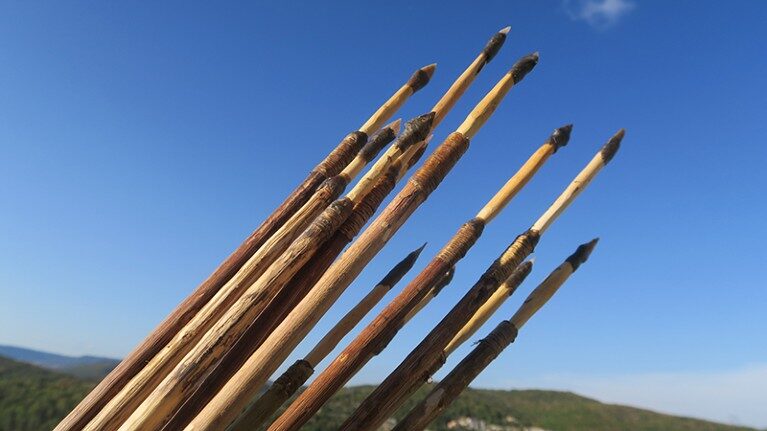
© AP Photo/Nabil al-JouraniWhat is considered a world's oldest bridge , some 4,000 years-old is seen by the ancient city-state of Lagash, near Nasiriyah, Iraq, Thursday, Feb. 23, 2023.
BAGHDAD —
An international archeological mission has uncovered the remnants of what is believed to be a 5,000-year-old restaurant or tavern in the ancient city of Lagash in southern Iraq.The discovery of the ancient dining hall — complete with a rudimentary refrigeration system, hundreds of roughly made clay bowls and the fossilized remains of an overcooked fish — announced in late January by a University of Pennsylvania-led team, generated some buzz beyond Iraq's borders.
It came against the backdrop of a resurgence of archeology in a country often referred to as the "cradle of civilization," but where archeological exploration has been stunted by decades of conflict before and after the U.S. invasion of 2003. Those events exposed the country's rich sites and collections to the looting of tens of thousands of artifacts.
"The impacts of looting on the field of archeology were very severe," Laith Majid Hussein, director of the State Board of Antiquities and Heritage of Iraq, told The Associated Press. "Unfortunately, the wars and periods of instability have greatly affected the situation in the country in general."
With relative calm prevailing over the past few years, the digs have returned. At the same time, thousands of stolen artifacts have been repatriated, offering hope of an archeological renaissance.
"'Improving' is a good term to describe it, or 'healing' or 'recovering,'" said Jaafar Jotheri, a professor of archeology at University of Al-Qadisiyah, describing the current state of the field in his country.
Iraq is home to six UNESCO-listed World Heritage Sites, among them the ancient city of Babylon, the site of several ancient empires under rulers like Hammurabi and Nebuchadnezzar.





Comment: See also: World's oldest cooking pots found in Siberia, created 16,000 years ago at the end of the last ice age